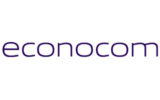Eco-design for digital services: assessment of the GreenConcept program
Why is there so much discussion about pollution generated by digital services?
According to research undertaken by Ipsos/Sopra-Steria , the environment is the number one concern of the French population. So it's only natural that public opinion and businesses are focusing more on the impact of the digital sector.
A key fact is that the digital sector as a whole is responsible for 4% of greenhouse gas emissions worldwide. The sector partly comprises the electronics sector, which has one of the highest resource consumptions per production unit: in terms of energy, raw materials, rare metals, water, etc. All of these resources play a fundamental role in the numerous environmental and social impacts throughout the production process. By way of an example, 700 kg of raw materials are required in the manufacturing of a laptop computer, and 200 kg for a cell phone.
What can we do to reduce this pollution?
The first weapon in the fight against digital pollution is the eco-design of digital services. Eco-design is the consideration of environmental issues in the design or redesign of a product or a service, to ensure that they consume less materials, less energy and produce less waste. The advantage of eco-design is that the approach is governed by the ISO 14062 standards and is based on an environmental impact assessment methodology itself governed by ISO 14040 and ISO 14044; life cycle analysis[1].
In practice, how does this translate to the field?
In practice, it is a matter of identifying the various components of a product or service in order to assess the weighting of each one in terms of greenhouse gas emissions, consumption of water, energy and scarce resources, and to reduce the weighting by optimizing the design and functionality.
The GreenConcept program is an excellent example of the practical implementation of eco-design for digital services. The Chamber of Commerce and Industry of Occitania launched the program in 2016, with the support of ADEME and the Occitania region. The aim of this initiative was to provide support to 30 regional businesses in the eco-design of their digital product and service portfolios.
In order to undertake this project, three design offices (Neutreo by APL, LCIE and GreenIT.fr) joined forces to combine their expertise in the joint development of a simplified life cycle analysis methodology, which can be applied without complication to all types of digital services. The companies, which represent a highly diverse panel of activity sectors (manufacturing, health, education, communications, agriculture, transport, construction, service industry), have all benefited from 7 days of support to reduce the environmental impact of one of their digital products or services.
Three years after it was launched, what are the results of the GreenConcept program?
The results of this operation are very positive: 28 companies have received support in the eco-design of their digital services, following the same methodology, the same rules and indicators.
The reduction in environmental impacts has been greater than 60% on average, across all 28 projects; this means that on average the total mobilized resources can be divided by 3 for a single service provision.

Average reduction in environmental impacts thanks to the GreenConcept program
Fifty best practices for eco-design have been identified and presented in the white paper that we have just published [white paper in French].
The main conclusions of the life cycle analyses completed indicate that:
- The number one source of environmental impact is to be found in computer terminals, essentially from the manufacturing phase which, according to the indicators, accounts for a concentration of between 30% and 60% of the environmental impacts.
- The data center/cloud element represents between 30% and 45% of the environmental impacts.
The companies participating in GreenConcept also noted other advantages resulting from the implementation of this environmental program, such as improved competitiveness and greater transparency (pricing, fund raising), etc.
It is significant that the most powerful levers in the reduction of digital pollution are to be found in the digital service economic model definition; the inclusion of service functionality from the design phase is a key focus in responsible digital development.
What are the limitations of eco-design?
GreenConcept has enabled us to assess the potential afforded by eco-design, However, the following two program limitations must be borne in mind:
- Firstly, we may often notice a “rebound effect” associated with the freeing up of resources enabled by eco-design. It is essential to ensure that the service functionality does not lead to excess consumption.
- Secondly, eco-design is only one of the levers for reducing the environmental footprint of the digital sector; there are others, in particular the raising of awareness of digital sobriety.
What are the next steps to be taken by APL?
On the back of the GreenConcept program, we wanted to delve further into the development of a robust database and an assessment methodology for the environmental impacts of digital services. To this end, we have set up the NégaOctet research and development project, winner of the “Perfecto” call for proposals issued by ADEME.
The aim of NégaOctet is to propose a standardized methodology (subject to validation by experts external to the project) for assessing the environmental impacts of digital services: streaming, online gaming, business applications, blockchain, big data, collaborative tools, etc. In order to bring improvements and to propose other practical actions, the first step is the objective and transparent assessment of their impacts.
[1] Analysis of the environmental impacts associated with the entire life cycle of a product or service.






















